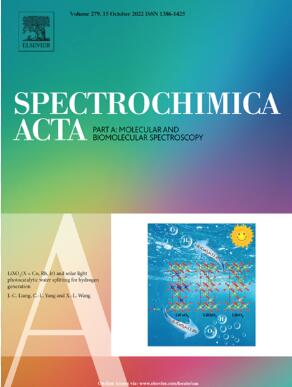激光诱导荧光光谱识别海洋微塑料:一维卷积神经网络和连续卷积模型
IF 4.3
2区 化学
Q1 SPECTROSCOPY
Spectrochimica Acta Part A: Molecular and Biomolecular Spectroscopy
Pub Date : 2025-05-21
DOI:10.1016/j.saa.2025.126450
引用次数: 0
摘要
海洋微塑料污染严重威胁生态系统和人类健康,其识别对于确定污染来源和污染程度具有重要意义。傅里叶变换红外光谱(FTIR)和拉曼光谱等传统方法是有效的,但耗时长,设备昂贵。激光诱导荧光可以通过芳香族和烃链的荧光特性来反映分子结构。该方法具有无损、快速、高效的特点,可用于微塑料的鉴别。研究了6种海洋微塑料在405 nm激光激发下的2400 LIF光谱。使用一维卷积神经网络(1D-CNN)和优化的连续卷积(con -conv)模型进行分类。1D-CNN的准确率为97.5%,表现出良好的性能,而control -conv模型的准确率可达99.5%。结果表明,contv -conv模型通过连续卷积操作有效增强了模型提取特征的能力,实现了更快的收敛。将在商业微塑料样本上训练的CNN模型应用于现场采集的海洋微塑料的识别,也取得了良好的效果。本研究提出了一种创新、高效的海洋MPs检测自动分类方法,该方法具有与便携式设备集成的潜力。本文章由计算机程序翻译,如有差异,请以英文原文为准。
Identification of marine microplastics by laser-induced fluorescence spectroscopy: 1-Dimensional convolutional neural network and continuous convolutional model
Marine microplastic pollution is a serious threat to ecosystems and human health, and its identification is of great significance for determining the source and extent of pollution. Conventional methods such as Fourier transform infrared (FTIR) spectroscopy and Raman spectroscopy are effective but they are time-consuming and their equipment is expensive. Laser induced fluorescence can reflect the molecular structure through the fluorescence characteristics of aromatic groups and hydrocarbon chains. This method has the characteristics of non-destructive, rapid and efficient, which can be used for the identification of microplastics. This study investigated 2400 LIF spectra of six types of marine microplastics excited by a 405 nm laser. A 1-dimensional convolutional neural network (1D-CNN) and an optimized continuous convolution (Cont-conv) model were used for classification. The accuracy of 1D-CNN is 97.5 %, demonstrating good performance, while the accuracy of the Cont-conv model can reach up to 99.5 %. The results show that the Cont-conv model effectively enhances the model’s ability to extract features through continuous convolution operations and achieves faster convergence. CNN models trained on commercial microplastic samples were applied to the identification of field-collected marine microplastics, and also achieved good results. This study presents an innovative and efficient automated classification method for the detection of marine MPs, which offers the potential for integration with portable devices.
求助全文
通过发布文献求助,成功后即可免费获取论文全文。
去求助
来源期刊
CiteScore
8.40
自引率
11.40%
发文量
1364
审稿时长
40 days
期刊介绍:
Spectrochimica Acta, Part A: Molecular and Biomolecular Spectroscopy (SAA) is an interdisciplinary journal which spans from basic to applied aspects of optical spectroscopy in chemistry, medicine, biology, and materials science.
The journal publishes original scientific papers that feature high-quality spectroscopic data and analysis. From the broad range of optical spectroscopies, the emphasis is on electronic, vibrational or rotational spectra of molecules, rather than on spectroscopy based on magnetic moments.
Criteria for publication in SAA are novelty, uniqueness, and outstanding quality. Routine applications of spectroscopic techniques and computational methods are not appropriate.
Topics of particular interest of Spectrochimica Acta Part A include, but are not limited to:
Spectroscopy and dynamics of bioanalytical, biomedical, environmental, and atmospheric sciences,
Novel experimental techniques or instrumentation for molecular spectroscopy,
Novel theoretical and computational methods,
Novel applications in photochemistry and photobiology,
Novel interpretational approaches as well as advances in data analysis based on electronic or vibrational spectroscopy.

 求助内容:
求助内容: 应助结果提醒方式:
应助结果提醒方式:


